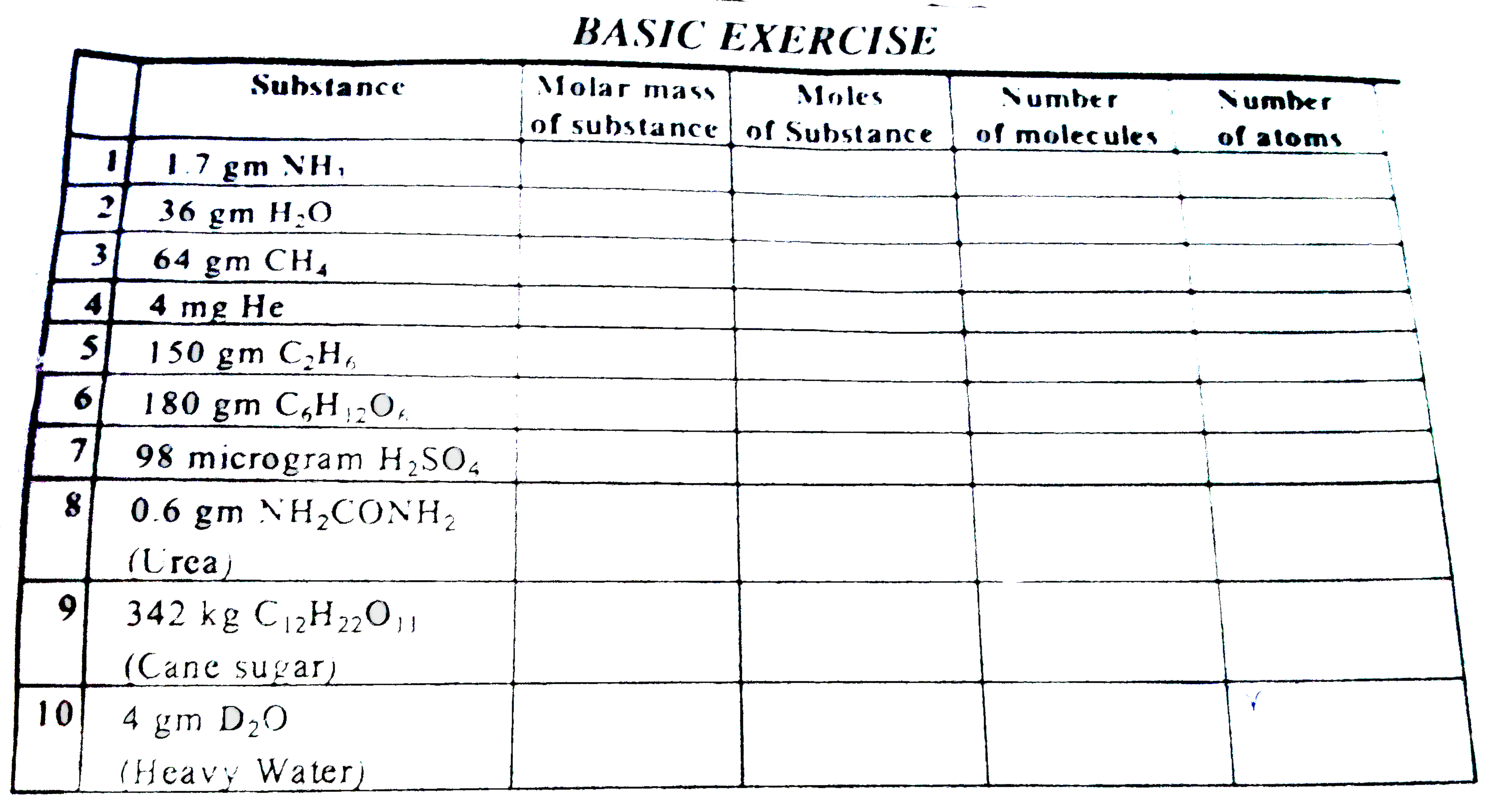12 moles of each A and B are allowed to react as given : 3A+2B⇒C+12D. If 60g of D is produced then calculate the atomic mass of D.
30
45
60
15
The correct Answer is:A
Step by step video, text & image solution for 12 moles of each A and B are allowed to react as given : 3A + 2B rArr C + (1)/(2)D. If 60g of D is produced then calculate the atomic mass of D. by Chemistry experts to help you in doubts & scoring excellent marks in Class 11 exams.
Updated on:21/07/2023Topper's Solved these Questions
- MOLE CONCEPT, STOICHIOMETRY & CONCENTRATION TERMSBOOK - GRB PUBLICATIONCHAPTER - MOLE CONCEPT, STOICHIOMETRY & CONCENTRATION TERMSEXERCISE - Percentage yield and percentage purity
18 Videos
- MOLE CONCEPT, STOICHIOMETRY & CONCENTRATION TERMSBOOK - GRB PUBLICATIONCHAPTER - MOLE CONCEPT, STOICHIOMETRY & CONCENTRATION TERMSEXERCISE - Sequential and Parallel Reactions
17 Videos
- MOLE CONCEPT, STOICHIOMETRY & CONCENTRATION TERMSBOOK - GRB PUBLICATIONCHAPTER - MOLE CONCEPT, STOICHIOMETRY & CONCENTRATION TERMSEXERCISE - Density
36 Videos
- ISOMERISMBOOK - GRB PUBLICATIONCHAPTER - ISOMERISMEXERCISE - SUBJECTIVE TYPE
67 Videos
- NOMENCLATURE AND CLASSIFICATIONBOOK - GRB PUBLICATIONCHAPTER - NOMENCLATURE AND CLASSIFICATIONEXERCISE - Subjective Type
24 Videos
Similar Questions
9 moles of "D" and 14 moles of E are allowed to react in a closed vessel according to given reactions. Calculate number of moles of B formed in the end of reaction, if 4 moles of G are present in reaction vessel. (percentage yield of reaction is mentioned in the reaction) Step -1 3D+4E80%→5C+A Step-2 3C+5G50%→6B+F
View Solution
A→2B+C
3B→2D
Find moles of D produced if initially 3 moles of A are taken.
View Solution
Knowledge Check
One mole of A and 2 moles of B are allowed to react in a 0.5 lit flask. What is the value of K if at equilibirum, 0.4 moles of C is formed in the reaction A+2B⇔C+2D
A4/9B9/4C8/27D27/8Equal number of moles of A and B are allowed to react with each other till it reaches equilibrium.
2A+B⇔C+D
The value of Kc for this equilibrium can never beA>1B<1C=1D∞4 moles of A are mixed with 4 moles of B. At equilibrium for the raction A+B⇔C+D, 2 moles of C and D are formed. The equilibrium constant for the reaction will be
A1B1/2C4D1/4
For the reaction
A(g)+2B(s)→C(l)+D(g), ΔH=−40kJ/mole
10 mole of each A and B are mixed in a closed rigid container and allowed to react at 300 K. Calculate the heat transfer (in kJ) occurs in the process.
[Use : R=8.3J/K-mole]
View SolutionA+2B+3C<⇒AB2C3
In the above reaction, 4.8 g of compound AB2C3 is formed as a product when 6.0 g of A, 6.0×1023 atoms of B, and 0.036 mol of C are react with each other. The atomic masses of A and C are 60 and 80 amu, respectively. Find out the atomic mass of B in amu. (Given:-Avogadro no= 6×1023 )
View SolutionFrom the following reaction sequences
2A = B + C
5B + D = 2E + F
E + G = 4H + J
calculate moles of H produced by 10 moles of A
View Solution3 moles of A and 4 moles of B are mixed together and allowed to come into equilibrium according to the following reaction.
3A(g)+4B(g)→2C(g)+3D(g)
When equilibrium is reached, there is 1 mole of C. The equilibrium constant of the reaction is
View Solution3 moles of A and 4 moles of B are mixed together and allowed to come into equilibrium according to the following reaction
A(g)+4B(g)⇔2C(g)+3D(g)
When equilirium is reached , there is 1 mole of C. The equilibrium extent of the reaction is
View Solution
